| Listing 11 - 17 of 17 | << page >> |
Sort by
|
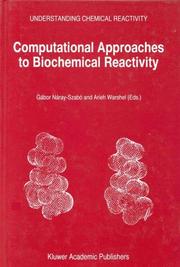
ISBN: 1280204966 9786610204960 0306469340 0792345126 Year: 1997 Publisher: Dordrecht ; Boston : Kluwer Academic,
Abstract | Keywords | Export | Availability | Bookmark
 Loading...
Loading...Choose an application
- Reference Manager
- EndNote
- RefWorks (Direct export to RefWorks)
A quantitative description of the action of enzymes and other biological systems is both a challenge and a fundamental requirement for further progress in our und- standing of biochemical processes. This can help in practical design of new drugs and in the development of artificial enzymes as well as in fundamental understanding of the factors that control the activity of biological systems. Structural and biochemical st- ies have yielded major insights about the action of biological molecules and the mechanism of enzymatic reactions. However it is not entirely clear how to use this - portant information in a consistent and quantitative analysis of the factors that are - sponsible for rate acceleration in enzyme active sites. The problem is associated with the fact that reaction rates are determined by energetics (i. e. activation energies) and the available experimental methods by themselves cannot provide a correlation - tween structure and energy. Even mutations of specific active site residues, which are extremely useful, cannot tell us about the totality of the interaction between the active site and the substrate. In fact, short of inventing experiments that allow one to measure the forces in enzyme active sites it is hard to see how can one use a direct experimental approach to unambiguously correlate the structure and function of enzymes. In fact, in view of the complexity of biological systems it seems that only computers can handle the task of providing a quantitative structure-function correlation.
Biochemistry --- Enzyme kinetics. --- Quantum biochemistry. --- Ligand binding (Biochemistry) --- Mathematical models. --- Biochemistry. --- Chemistry, Physical organic. --- Chemistry. --- Biochemistry, general. --- Physical Chemistry. --- Computer Applications in Chemistry. --- Biological and Medical Physics, Biophysics. --- Physical chemistry. --- Chemoinformatics. --- Biophysics. --- Biological physics. --- Biological physics --- Biology --- Medical sciences --- Physics --- Chemical informatics --- Chemiinformatics --- Chemoinformatics --- Chemistry informatics --- Chemistry --- Information science --- Computational chemistry --- Chemistry, Theoretical --- Physical chemistry --- Theoretical chemistry --- Biological chemistry --- Chemical composition of organisms --- Organisms --- Physiological chemistry --- Data processing --- Composition --- Binding, Ligand (Biochemistry) --- Dye-ligand affinity chromatography --- Radioligand assay --- Biochemistry, Quantum --- Biology, Quantum --- Quantum biology --- Quantum chemistry --- Dynamics, Enzyme --- Enzyme dynamics --- Enzymes --- Kinetics, Enzyme --- Chemical kinetics --- Kinetics
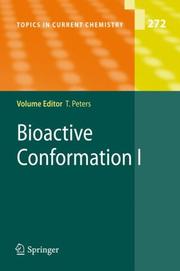
ISSN: 03401022 ISBN: 9783540490777 3540490779 9786610727469 1280727462 3540490787 Year: 2007 Volume: 272 Publisher: Berlin: Springer,
Abstract | Keywords | Export | Availability | Bookmark
 Loading...
Loading...Choose an application
- Reference Manager
- EndNote
- RefWorks (Direct export to RefWorks)
Molecular Conformation. --- Binding Sites. --- Ligands. --- Nuclear Magnetic Resonance, Biomolecular. --- Protein Binding. --- Conformational analysis. --- Bioactive compounds --- Ligand binding (Biochemistry) --- Analyse conformationnelle --- Ligands (Biochimie) --- Analysis. --- Fixation --- Bioactive compounds -- Analysis. --- Ligand binding (Biochemistry). --- Chemistry --- Physical Sciences & Mathematics --- Physical & Theoretical Chemistry --- Biochemistry --- Binding, Ligand (Biochemistry) --- Biologically active compounds --- Compounds, Bioactive --- Compounds, Biologically active --- Compounds, Physiologically active --- Physiologically active compounds --- Analysis, Conformational --- Chemistry. --- Organic chemistry. --- Physical chemistry. --- Medicinal chemistry. --- Biochemistry. --- Organic Chemistry. --- Biochemistry, general. --- Physical Chemistry. --- Medicinal Chemistry. --- Dye-ligand affinity chromatography --- Radioligand assay --- Chemicals --- Molecular rotation --- Chemistry, Organic. --- Chemistry, Physical organic. --- Biological chemistry --- Chemical composition of organisms --- Organisms --- Physiological chemistry --- Biology --- Medical sciences --- Organic chemistry --- Chemistry, Physical organic --- Chemistry, Organic --- Chemistry, Physical and theoretical --- Composition --- Chemistry, Medical and pharmaceutical --- Chemistry, Pharmaceutical --- Drug chemistry --- Drugs --- Medical chemistry --- Medicinal chemistry --- Pharmacochemistry --- Chemistry, Theoretical --- Physical chemistry --- Theoretical chemistry --- Bioactive compounds - Analysis.
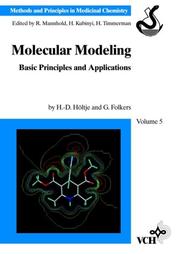
ISBN: 3527293841 9783527293841 Year: 1997 Volume: v. 5 Publisher: Weinheim: VCH,
Abstract | Keywords | Export | Availability | Bookmark
 Loading...
Loading...Choose an application
- Reference Manager
- EndNote
- RefWorks (Direct export to RefWorks)
Pharmacosynthesis. Pharmacochemistry --- Biomolecules --- Proteins --- Molecules --- Drugs --- Ligand binding (Biochemistry) --- Biomolécules --- Protéines --- Molécules --- Médicaments --- Ligands (Biochimie) --- Structure --- Computer simulation. --- Models --- Design --- Simulation par ordinateur --- Modèles --- Conception --- Fixation --- Computer simulation --- 539.2 --- -Drugs --- -Ligand binding (Biochemistry) --- -Molecules --- -Proteins --- -#WSCH:AAS2 --- 681.3*D48 --- 681.3*D48 Performance: measurements; modeling and prediction; monitors; operational analysis; queuing theory; simulation; stochastic analysis (Operating systems)--See also {?681.3*C2}; {681.3*D28}; {681.3*I6} --- Performance: measurements; modeling and prediction; monitors; operational analysis; queuing theory; simulation; stochastic analysis (Operating systems)--See also {?681.3*C2}; {681.3*D28}; {681.3*I6} --- Proteids --- Polypeptides --- Proteomics --- Binding, Ligand (Biochemistry) --- Biochemistry --- Dye-ligand affinity chromatography --- Radioligand assay --- Medicaments --- Medications --- Medicine (Drugs) --- Medicines (Drugs) --- Pharmaceuticals --- Prescription drugs --- Bioactive compounds --- Medical supplies --- Pharmacopoeias --- Chemotherapy --- Materia medica --- Pharmacology --- Pharmacy --- Biological molecules --- Molecular biology --- 539.2 Properties and structure of molecular systems --- Properties and structure of molecular systems --- -Computer simulation --- Biomolécules --- Protéines --- Molécules --- Médicaments --- Modèles --- #WSCH:AAS2 --- Structure&delete& --- Design&delete& --- Models&delete& --- Drugs - Design - Computer simulation --- Biomolecules - Structure - Computer simulation --- Proteins - Structure - Computer simulation --- Ligand binding (Biochemistry) - Computer simulation --- Molecules - Models - Computer simulation
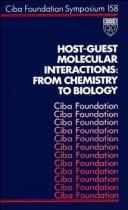
ISBN: 0471929581 9780471929581 Year: 1991 Volume: 158 Publisher: Chichester : Wiley,
Abstract | Keywords | Export | Availability | Bookmark
 Loading...
Loading...Choose an application
- Reference Manager
- EndNote
- RefWorks (Direct export to RefWorks)
Host-Guest Molecular Interactions: From Chemistry to Biology Chairman: I.O. Sutherland 1991 Host-guest molecular interactions lead to the formation of molecular assemblies containing two or more species. It has long been recognized that such 'supramolecular' association is of fundamental importance in biological processes, but it is only recently that chemists have begun to design and synthesize novel host molecules. The field is relatively new, but exciting applications are already emerging, for example in the development of molecular sensors, of new chromogenic reagents and of reagents for selective metal ion capture or for the capture of molecules such as urea. In addition, it is expected that improved understanding of the interactions in relatively simple complexes of synthetic host molecules will lead to a better understanding of the much more complex biological systems in which the host molecules are either proteins or nucleic acids. In this book the contributions from experts in the chemical and biological sciences range over intermolecular interactions in both synthetic and natural (biological) systems. Topics covered include biomimetic chemistry, the design of synthetic host molecules which mimic biological processes such as ion transport across membranes and catalysis, and the concepts of preorganization and template-directed synthesis. Molecular recognition processes involved in binding of antibiotics to peptides and to DNA and in binding of sequence-specific gene inhibitors to DNA are discussed. The potential applications of oligonucleotides with modified phosphate diester linkages as probes of DNA-protein interactions and for anti-HIV treatment are described. Interactions between proteins and other molecules and the computational modelling of interactions are considered. Related Ciba Foundation Symposia: No 119 Synthetic peptides as antigens Chairman: G.L. Ada 1986 ISBN 0 471 99838 9 No 145 Carbohydrate recognition in cellular function Chairman:
Ligand binding (Biochemistry) --- Drugs --- Protein engineering --- Protein binding --- Congresses. --- Design --- Drug Design. --- Ligands. --- Carrier Proteins. --- Protein Engineering. --- Genetic Engineering, Protein --- Proteins, Genetic Engineering --- Genetic Engineering of Proteins --- Engineering, Protein --- Engineering, Protein Genetic --- Protein Genetic Engineering --- Genetic Engineering --- Directed Molecular Evolution --- DNA Shuffling --- Molecular Farming --- Binding Protein --- Binding Proteins --- Transport Proteins --- Protein, Binding --- Proteins, Binding --- Proteins, Carrier --- Proteins, Transport --- Protein Binding --- Receptors, Transferrin --- Drug Modeling --- Design, Drug --- Designs, Drug --- Drug Designs --- Drug Modelings --- Modeling, Drug --- Modelings, Drug --- Medicaments --- Medications --- Medicine (Drugs) --- Medicines (Drugs) --- Pharmaceuticals --- Prescription drugs --- Bioactive compounds --- Medical supplies --- Pharmacopoeias --- Chemotherapy --- Materia medica --- Pharmacology --- Pharmacy --- Binding, Ligand (Biochemistry) --- Biochemistry --- Dye-ligand affinity chromatography --- Radioligand assay --- Molecular biology --- Conferences - Meetings --- Carrier Proteins --- Drug Design --- Ligands --- Protein Engineering --- Design&delete& --- Congresses --- Ligand binding (Biochemistry) - Congresses. --- Drugs - Design - Congresses. --- Protein engineering - Congresses. --- Protein binding - Congresses. --- Computer-Aided Drug Design --- Computerized Drug Design --- Pharmaceutical Design --- Computer Aided Drug Design --- Computer-Aided Drug Designs --- Computerized Drug Designs --- Design, Computer-Aided Drug --- Design, Computerized Drug --- Design, Pharmaceutical --- Designs, Computer-Aided Drug --- Designs, Computerized Drug --- Designs, Pharmaceutical --- Drug Design, Computer-Aided --- Drug Design, Computerized --- Drug Designs, Computer-Aided --- Drug Designs, Computerized --- Pharmaceutical Designs --- Ligand --- Carrier Protein --- Transport Protein --- Protein, Carrier --- Protein, Transport
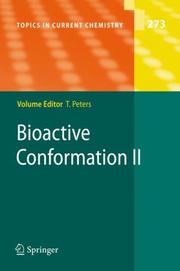
ISSN: 03401022 ISBN: 9783540490807 3540490795 9783540490791 3540490809 Year: 2008 Volume: 273 Publisher: Berlin: Springer,
Abstract | Keywords | Export | Availability | Bookmark
 Loading...
Loading...Choose an application
- Reference Manager
- EndNote
- RefWorks (Direct export to RefWorks)
Speci?c binding of a ligand to a receptor is a key step in a variety of biol- ical processes, such as immune reactions, enzyme cascades, or intracellular transport processes. The ligand-receptor terminology implies that the rec- tor molecule is signi?cantly larger than the ligand, and the term bioactive conformation usually characterizes the conformation of a ligand when it is bound to a receptor. In a more general sense, bioactive conformation applies toanymoleculeinabiologicallyrelevantboundstateregardlessofsizecons- erations. Mostofthecontributions tothisbookaddressligandsthat aremuch smaller than their receptors. X-ray crystallography and high resolution NMR spectroscopy are the two main experimental techniques used to study bioactive conformations. The- fore,the twovolumes ofthisbookcover approachesthat use either ofthetwo techniques, or a combination thereof. The combination of X-ray crystallog- phy and NMR spectroscopy is particularly useful when a crystal structure of areceptorprotein,butnotofthereceptorprotein-ligandcomplex,isavailable. Anumberofexperimentaltechniquestoanalyzethebioactiveconformationof aligandwithNMRarebasedontheobservationoftheresonancesignalsofthe free ligand that is in exchange with the bound ligand. Several chapters focus onsuchapproachesthat rangefromclassical transferredNOEexperiments, totransferred dipolar couplings,toSTD (saturation transfer difference) NMR techniques. Incaseswhere tightbinding inthesub-nanomolar rangeprevents the analysis of the bioactive conformation via free ligand signals, the ligand- proteincomplexhas tobeanalyzed withproteinNMR-based techniques orby crystallography.Sincethisareahasbeenthesubjectofmanyreviewsandmo- graphsitwill not be covered here in particular detail. As a unifying theme, all contributionstargetthequestionofhowmolecular recognitionofbiologically active molecules is achieved on the atomic scale. Depending on the research topic the results from these studies have a strong impact not only in basic research but also in several ?elds of application ranging frompharmaceutical applications tothe use of biomolecules as, for example, cryoprotectants.
Chemistry. --- Organic Chemistry. --- Biochemistry, general. --- Physical Chemistry. --- Medicinal Chemistry. --- Analytical Chemistry. --- Analytical biochemistry. --- Chemistry, Organic. --- Physical organic chemistry --- Biochemistry. --- Chimie --- Biochimie analytique --- Chimie organique --- Chimie organique physique --- Biochimie --- Conformational analysis --- Bioactive compounds --- Ligand binding (Biochemistry) --- Molecular Conformation --- Binding Sites --- Ligands --- Nuclear Magnetic Resonance, Biomolecular --- Protein Binding --- Analysis --- Chemistry --- Biochemistry --- Physical Sciences & Mathematics --- 577.354.3 --- Chemoreception --- 577.354.3 Chemoreception --- Conformational analysis. --- Analysis. --- Binding, Ligand (Biochemistry) --- Analysis, Conformational --- Biologically active compounds --- Compounds, Bioactive --- Compounds, Biologically active --- Compounds, Physiologically active --- Physiologically active compounds --- Analytical chemistry. --- Organic chemistry. --- Physical chemistry. --- Medicinal chemistry. --- Dye-ligand affinity chromatography --- Radioligand assay --- Molecular rotation --- Chemicals --- Chemistry, Physical organic. --- Analytic biochemistry --- Chemistry, Analytic --- Chemistry, Physical organic --- Chemistry, Organic --- Chemistry, Physical and theoretical --- Biological chemistry --- Chemical composition of organisms --- Organisms --- Physiological chemistry --- Biology --- Medical sciences --- Organic chemistry --- Composition --- Bioanalytic chemistry --- Bioanalytical chemistry --- Analytical chemistry --- Analysis, Chemical --- Analytic chemistry --- Chemical analysis --- Chemistry, Medical and pharmaceutical --- Chemistry, Pharmaceutical --- Drug chemistry --- Drugs --- Medical chemistry --- Medicinal chemistry --- Pharmacochemistry --- Chemistry, Theoretical --- Physical chemistry --- Theoretical chemistry --- Bioactive compounds - Analysis
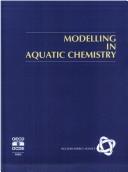
ISBN: 9264155694 Year: 1997 Publisher: Paris : [Washington, D.C. : Nuclear Energy Agency, Organisation for Economic Co-operation and Development ; Distributor, OECD Washington Center],
Abstract | Keywords | Export | Availability | Bookmark
 Loading...
Loading...Choose an application
- Reference Manager
- EndNote
- RefWorks (Direct export to RefWorks)
Thermodynamic data are important for the modelling of the chemical processes in the engineering part on nuclear waste repository systems (the "near-field" region), and also to describe the effect of the "far-field", i.e. how the chemical change in ground and surface water systems may affect the transport of toxic elements from the repository to the biosphere.This publication contains guidelines on how to use the NEA-recommended Thermochemical Database (TDB) values, and on procedures to estimate values for cases where none can be recommended based on published experimental work.This volume is of interest to anyone involved in modelling of aqueous systems, including scientists working in non-nuclear activities. Each subject is introduced in an elementary way, including simple examples, and prior expert knowledge in the various subjects is not required.The text contains the scientific background, and references, to the various subject areas, and is therefore a reference source also for the experts working with modelling of aquatic systems. Emphasis is given to the advantages and limitations of the various models described in the frame of a simplified systems discussion. Some of the chapters are intended as guidelines for the chemical equilibrium modelling of aquatic systems (for example, ionic strength and temperature corrections). Other chapters are intended to introduce the reader to non-equilibrium modelling: mass transfer between phases and transport of solutes in aquatic systems.Each chapter has been written independently by the author(s), while the co-ordination of the different subjects has been the task of the editors. A peer-review procedure has been followed to ensure the quality of the text.
Water chemistry --- Chemical reactions --- Thermodynamics. --- Transport theory. --- Geochemical modeling. --- Humic acid --- Ligand binding (Biochemistry) --- Speciation (Chemistry) --- Eau --- Réactions organiques (Chimie) --- Thermodynamique --- Transport, Théorie du --- Mathematical models. --- Reactivity --- Thermodynamics --- Chimie --- Modèles mathématiques --- Transport theory --- Geochemical modeling --- Radioactive wastes --- Modèles en géologie --- Acides humiques --- Ligands (biochimie) --- Déchets radioactifs --- Mathematical models --- Réactivité --- Fixation --- 543.3 --- 556.31 --- 547.992 --- #ABIB:acol --- Water sampling and analysis --- Properties of groundwater --- Humic acids. Lignin --- 547.992 Humic acids. Lignin --- 556.31 Properties of groundwater --- 543.3 Water sampling and analysis --- Aquatic chemistry --- Chemical hydrology --- Hydrochemistry --- Hydrogeochemistry --- Natural water chemistry --- Geochemistry --- Hydrology --- Boltzmann transport equation --- Transport phenomena --- Mathematical physics --- Particles (Nuclear physics) --- Radiation --- Statistical mechanics --- Chemistry, Physical and theoretical --- Dynamics --- Mechanics --- Physics --- Heat --- Heat-engines --- Quantum theory --- Biochemical speciation --- Chemical speciation --- Chemistry, Analytic --- Binding, Ligand (Biochemistry) --- Biochemistry --- Dye-ligand affinity chromatography --- Radioligand assay --- Organic acids --- Geochemical reaction modeling --- Modeling, Geochemical --- Reaction modeling, Geochemical --- Geological modeling --- Reactions, Chemical --- Chemical processes --- Reactivity&delete& --- Thermodynamics&delete& --- Thermodynamique. --- Transport, Théorie du. --- Modèles en géologie. --- Modèles mathématiques. --- Fixation. --- MODELING --- SILICATES --- MODELLING --- SOLUBILITY --- GROUND WATER --- Geological solids --- Aqautic sciences --- Human substances --- CHEMISTRY --- Monograph --- Modeling. --- Silicates. --- Solubility. --- Groundwater. --- Chemistry. --- Physical sciences --- Ground water --- Subterranean water --- Underground water --- Water, Underground --- Water --- Hydrogeology --- Solution (Chemistry) --- Oxygen compounds --- Silicon compounds --- Clay modeling --- Modelling --- Molding (Clay, plaster, etc.) --- Clay --- Sculpture --- Technique --- Analytical chemistry --- Théorie du transport. --- Théorie du transport. --- Modèles en géologie. --- Déchets radioactifs --- Modèles mathématiques. --- Réactivité
Book
ISBN: 9780956478115 0956478115 Year: 2010 Publisher: [Place of publication not identified] Helvetian Press
Abstract | Keywords | Export | Availability | Bookmark
 Loading...
Loading...Choose an application
- Reference Manager
- EndNote
- RefWorks (Direct export to RefWorks)
Nucleic acids --- Proteins --- Enzymes --- Physical biochemistry --- Macromolecules --- Ligand binding (Biochemistry) --- Protein folding --- Polypeptides --- Nucleic acid hybridization --- Catalysis --- DNA --- DNA-protein interactions --- RNA --- RNA-protein interactions --- Nucleic Acids --- 577.122 --- Gene Products, Protein --- Gene Proteins --- Protein --- Protein Gene Products --- Proteins, Gene --- Molecular Mechanisms of Pharmacological Action --- 577.122 Protein metabolism --- Protein metabolism --- Nucleic Acid --- Acid, Nucleic --- Acids, Nucleic --- Interactions, RNA-protein --- Protein-RNA interactions --- RNA-protein binding --- Protein binding --- Ribonucleic acid --- Ribose nucleic acid --- Ribose --- DNA-protein binding --- Interactions, DNA-protein --- Protein-DNA interactions --- DNA-ligand interactions --- Deoxyribonucleic acid --- Desoxyribonucleic acid --- Thymonucleic acid --- TNA (Nucleic acid) --- Deoxyribose --- Genes --- Activation (Chemistry) --- Chemistry, Physical and theoretical --- Surface chemistry --- Enzyme regulation --- Regulation of enzyme activity --- Biological control systems --- Cytogenetics --- Cytology --- Hybridization --- Polynucleotides --- Biomolecules --- Biopolymers --- Peptides --- Denaturation of proteins --- Protein denaturation --- Protein unfolding --- Unfolding of proteins --- Coagulation --- Folding of proteins --- Protein conformation --- Biocatalysts --- Ferments --- Soluble ferments --- Catalysts --- Enzymology --- Binding, Ligand (Biochemistry) --- Biochemistry --- Dye-ligand affinity chromatography --- Radioligand assay --- Molecules --- Supramolecular chemistry --- Biophysical chemistry --- Physical organic chemistry --- Proteids --- Proteomics --- Conformation --- Denaturation --- Structure --- Regulation --- Technique --- Unfolding --- Folding
| Listing 11 - 17 of 17 | << page >> |
Sort by
|

 Search
Search Feedback
Feedback About UniCat
About UniCat  Help
Help News
News